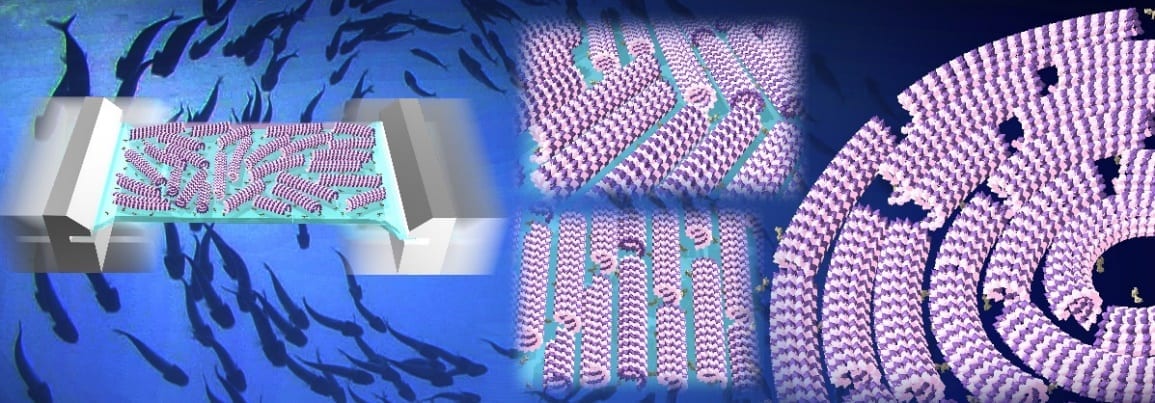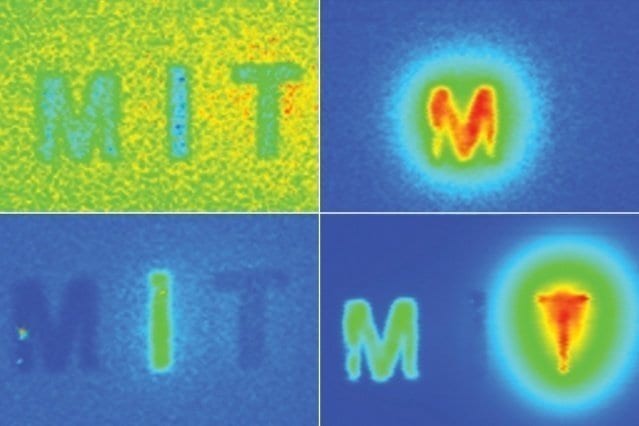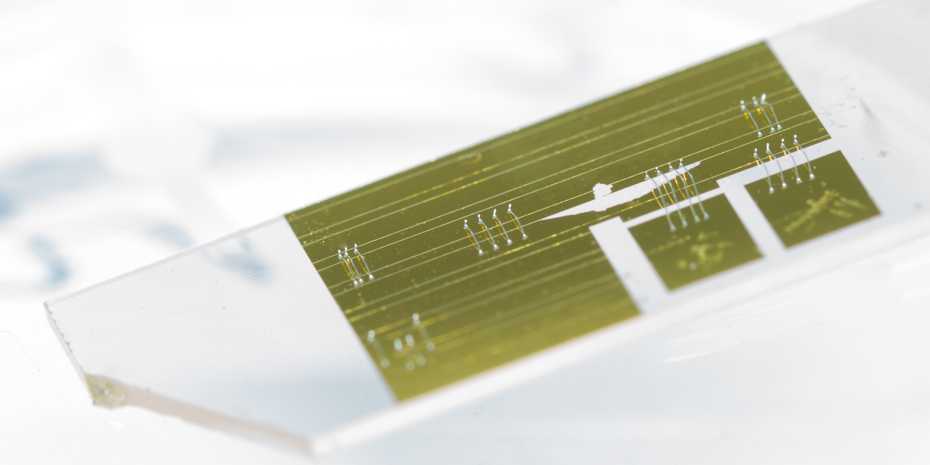
The swarming behavior of about 100 million molecular machines can be controlled by applying simple mechanical stimuli such as extension and contraction. This method could lead to the development of new swarming molecular machines and small energy-saving devices.
The swarming molecules in motion aligned in one direction, exhibited zigzag patterns, or formed a vortex responding to varying mechanical stimuli. They could even self-repair the moving pattern after a disruption, according to a study led by Hokkaido University scientists.
In recent years, many scientists have made efforts to miniaturize machines found in the macroscopic world. The 2016 Nobel laureates in chemistry were awarded for their outstanding research on molecular machines and design and synthesis of nanomachines.
In previous studies, the research team led by Associate Professor Akira Kakugo of Hokkaido University developed molecular machines consisting of motor proteins called kinesins and microtubules, which showed various swarming behaviors. “Swarming is a key concept in modern robotics. It gives molecular machines new properties such as robustness and flexibility that an individual machine cannot have,” says Akira Kakugo. “However, establishing a methodology for controlling swarming behaviors has been a challenge.”
In the current study published in ACS Nano, the team used the same system comprising motor protein kinesins and microtubules, both bioengineered. The kinesins are fixed on an elastomer substrate surface, and the microtubules are self-propelled on the kinesins, powered by the hydrolysis of adenosine triphosphate (ATP).
“Since we know that applying mechanical stress can play a key role in pattern formation for active matters, we investigated how deformation of the elastomer substrate influences the swarming patterns of molecular machines,” says Akira Kakugo.
By extending and contracting the elastomer substrate, mechanical stimulation is applied to about 100 million microtubules that run on the substrate surface. The researchers first found that microtubules form wave patterns when no stress is applied. When the substrate is expanded and contracted 1.3 times or more one time, almost all of the 100 million microtubules perpendicularly aligned to the expansion and contraction axis, and when the substrate is expanded and contracted 1.3 times or less repeatably, it created zigzag patterns placed in diagonal directions.

Their computer simulation suggested that the orientation angles of microtubules correspond to the direction to attain smooth movement without buckling, which is further amplified by the collective migration of the microtubules.

Another important finding was that the moving pattern of microtubules can be modulated by applying new mechanical stimuli and it can be self-repaired even if the microtubule arrangement is disturbed by scratching a part of it.
“Our findings may contribute to the development of new molecular machines that perform collective motion and could also help advance technologies for energy-saving small devices,” Akira Kakugo commented.
This study was conducted in collaboration with scientists at the Tokyo Institute of Technology, Gifu University, and Columbia University.
Learn more: A simple way to control swarming molecular machines
The Latest on: Swarming molecular machines
[google_news title=”” keyword=”swarming molecular machines” num_posts=”10″ blurb_length=”0″ show_thumb=”left”]
via Google News
The Latest on: Swarming molecular machines
- UChicago scientists use machine learning to turn cell snapshots dynamicon May 2, 2024 at 5:00 am
Pritzker School of Molecular Engineering study hopes to use machine learning to boost cancer, immunology research ...
- Nanoscale gadgetson May 1, 2024 at 11:36 am
For the study of artificial molecular machines, synthetic strategies are used that allow the design and preparation of functional molecules and aggregates. Chemists have learned how to control ...
- Scientists create world’s first ‘molecular robot’ capable of building moleculeson April 18, 2024 at 9:56 pm
Molecular robotics represents the ultimate in the miniaturisation of machinery. Our aim is to design and make the smallest machines possible. This is just the start but we anticipate that within 10 to ...
- Nathan Derron April 17, 2024 at 1:37 pm
The group studies these molecular machines in two ways: 1) at the level of individual motors to better understand how they convert ATP into the productive work required by the cell, and 2) in small ...
- Quantum Deep Learning: Unlocking New Frontierson April 8, 2024 at 5:55 pm
Thus, the combination of quantum computation with machine learning ... networks for building a molecular energy estimating engine. Quantum-based particle swarm optimization was utilized in ...
- Researchers reveal assembly of critical molecular machine that removes non-coding information from geneson April 3, 2024 at 5:00 pm
The splicing reaction is catalyzed by a large and dynamic molecular machine known as the spliceosome. The spliceosome surveys messenger RNA molecules to identify the beginning and the end of each ...
- Molecular Motors: Nature's Nanomachineson April 1, 2024 at 12:09 am
Molecular motors have inspired researchers to develop artificial molecular machines and nanodevices that mimic their functions and properties. Design of a molecular motor with a permanent electric ...
- Biological Scienceson October 3, 2023 at 3:24 pm
The major embraces three broad core areas: cells, physiology and development; genetics, molecular biology and evolution; and biodiversity, ecology and conservation. All majors are strongly encouraged ...
- Zoology and Physiologyon September 9, 2023 at 2:31 pm
Something that has intrigued me recently are the ribosomes, and I am dwelling on my hypothesis that these tiny molecular machines, with their mobility around neurons, are responsible for the variable ...
- Molecular BioSystemson August 13, 2023 at 12:47 am
Molecular BioSystems has been renamed Molecular Omics. Molecular Omics publishes molecular level experimental and bioinformatics research in the -omics sciences, including genomics, proteomics, ...
via Bing News









